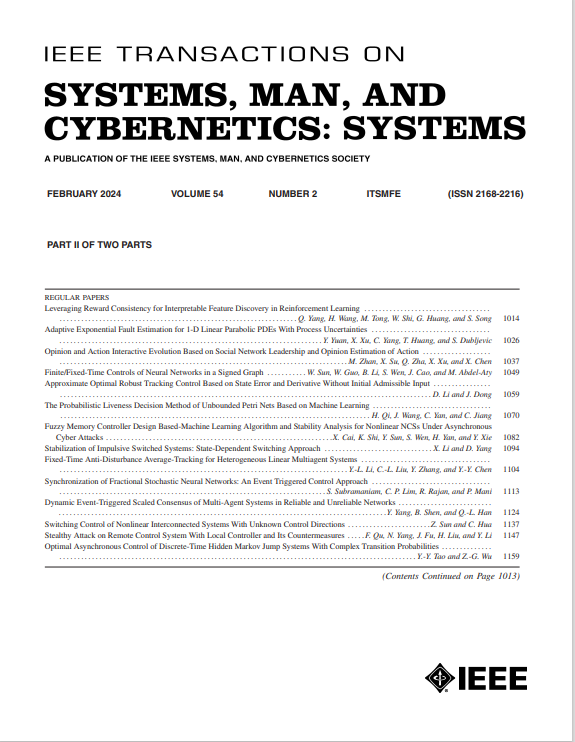Deep Co-Training Partial Least Squares Model for Semi-Supervised Industrial Soft Sensing
IF 8.6
1区 计算机科学
Q1 AUTOMATION & CONTROL SYSTEMS
IEEE Transactions on Systems Man Cybernetics-Systems
Pub Date : 2025-02-21
DOI:10.1109/TSMC.2025.3540028
引用次数: 0
Abstract
Data-driven soft sensing has become quite popular in recent years, which can provide real-time estimations of key variables in industrial processes. While the introduction of deep learning does improve the prediction performance, it is highly restricted to the number of labeled training data, as well as large computational burden and cumbersome parameter tuning procedures. How to break through the bottleneck of data-drive models in terms of limited labeled data and high computational complexity should be one of the main recent focuses in the field of industrial soft sensing. In this article, a deep co-training PLS (deep CT-PLS) model is proposed to extend the ordinary PLS model to the semi-supervised deep form. While the deep model can efficiently extract inherent natures of process data, the co-training strategy makes lots of unlabeled data useful through a two-view cross training and annotation process. In this case, the performance restriction of the deep PLS model can be greatly relieved, with the incorporation of additional unlabeled data, while at the same time the designed model structure keeps in a low computational complexity. Based on the case study on a real industrial production process, the deep CT-PLS model can significantly improve the soft sensing performance.半监督工业软测量的深度协同训练偏最小二乘模型
近年来,数据驱动的软测量变得非常流行,它可以为工业过程中的关键变量提供实时估计。虽然深度学习的引入确实提高了预测性能,但它高度限制于标记训练数据的数量,以及巨大的计算负担和繁琐的参数调优过程。如何突破数据驱动模型在有限的标记数据和高计算复杂度方面的瓶颈,应该是近期工业软测量领域的主要关注点之一。本文提出了一种深度协同训练PLS (deep CT-PLS)模型,将普通PLS模型扩展到半监督深度形式。深度模型可以有效地提取过程数据的固有属性,而协同训练策略通过双视图交叉训练和标注过程,使大量未标记数据变得有用。在这种情况下,通过加入额外的未标记数据,可以极大地缓解深度PLS模型的性能限制,同时设计的模型结构保持在较低的计算复杂度。基于实际工业生产过程的案例研究表明,深度CT-PLS模型可以显著提高软测量性能。
本文章由计算机程序翻译,如有差异,请以英文原文为准。
求助全文
约1分钟内获得全文
求助全文
来源期刊

IEEE Transactions on Systems Man Cybernetics-Systems
AUTOMATION & CONTROL SYSTEMS-COMPUTER SCIENCE, CYBERNETICS
CiteScore
18.50
自引率
11.50%
发文量
812
审稿时长
6 months
期刊介绍:
The IEEE Transactions on Systems, Man, and Cybernetics: Systems encompasses the fields of systems engineering, covering issue formulation, analysis, and modeling throughout the systems engineering lifecycle phases. It addresses decision-making, issue interpretation, systems management, processes, and various methods such as optimization, modeling, and simulation in the development and deployment of large systems.
 求助内容:
求助内容: 应助结果提醒方式:
应助结果提醒方式:


